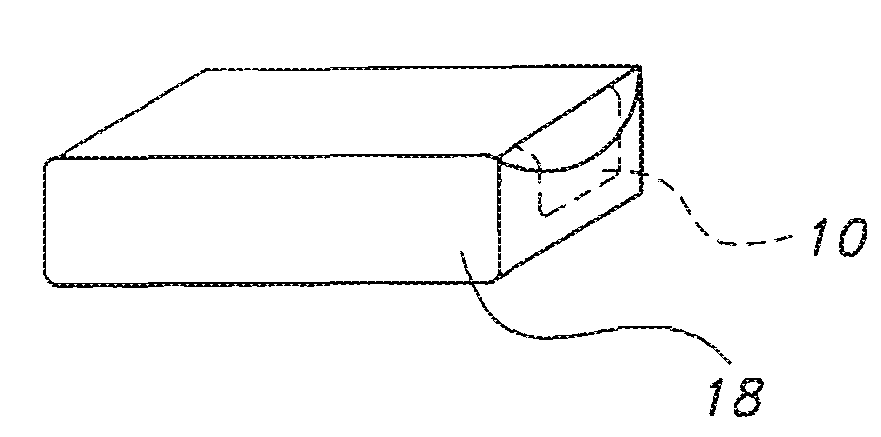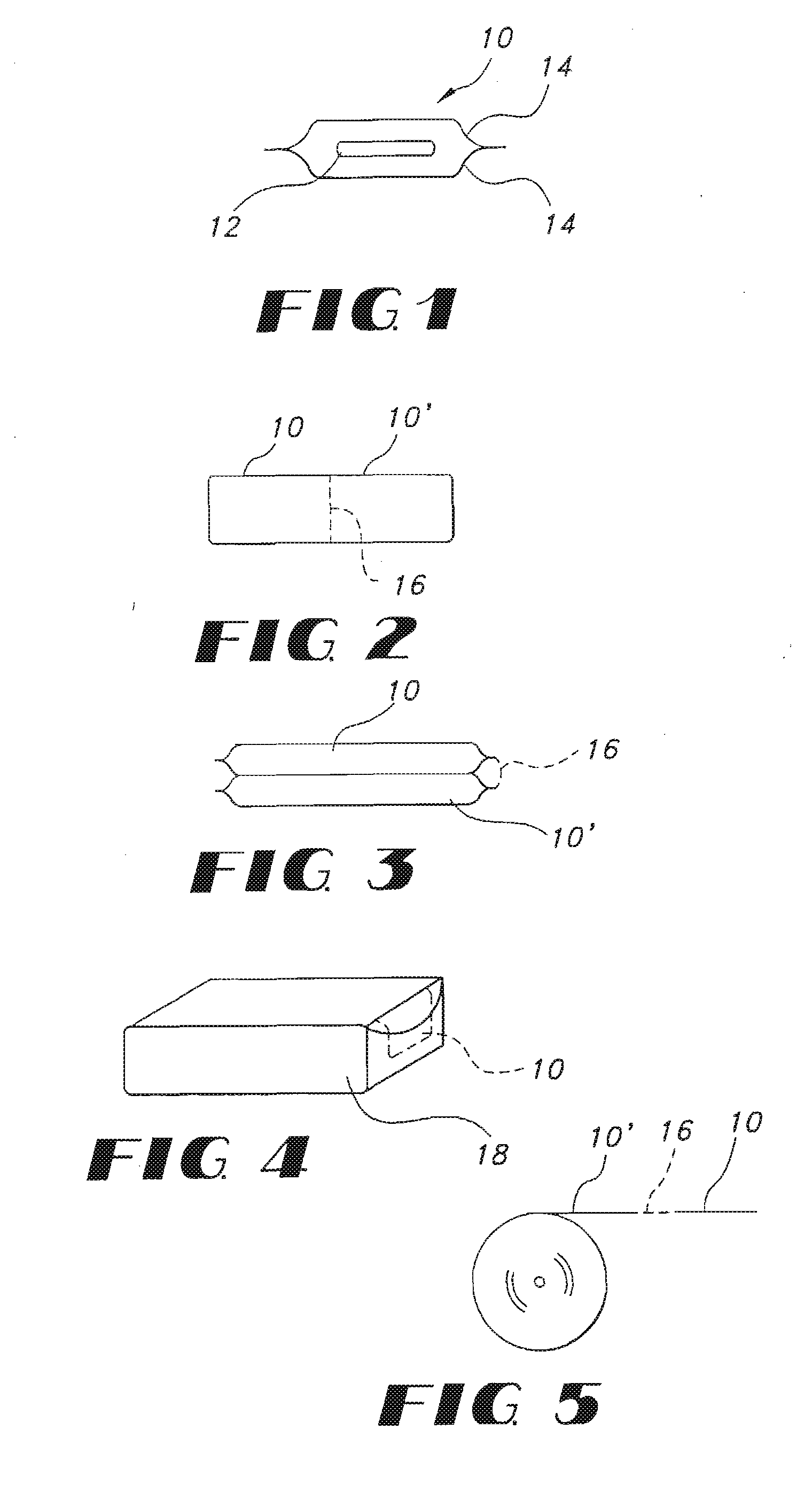High dose film compositions and methods of preparation
a film composition and high-dosage technology, applied in the field of high-dosage film composition and preparation, can solve the problems of large-scale medication forms that require additional storage space, tablets which have a tendency to be inaccurate, and many peopl
- Summary
- Abstract
- Description
- Claims
- Application Information
AI Technical Summary
Benefits of technology
Problems solved by technology
Method used
Image
Examples
example a
[0207]A film cassette containing film strips having the formulation, set forth in Table 1 below was prepared.
TABLE 1IngredientApproximate % By Weight of Film StripFilm Base146%Active Agent250%Other Components3 4%1Film base containing a blend of polyethylene oxide (PEO) and polydextrose in a ratio of about 80 to about 20 with added plasticizers.2Calcium carbonate.3Flavors, sweeteners, antifoam agents
[0208]Each of the strips had weights from about 200 to about 215 mg and contained from about 100 to about 107 mg of active agent depending on the overall weight of the particular strip.
example b
[0209]A film cassette containing film strips having the formulation set forth in Table 2 below was prepared.
TABLE 2IngredientApproximate % By Weight of Film StripFilm Base146%Active Agent250%Other Components 4%1Film base containing a blend of polyethylene oxide (PEO) and polydextrose in a ratio of about 80 to about 20 with added plasticizers.2Calcium carbonate.
[0210]Each of the strips had weights from about 290 mg to about 325 mg and contained from about 145 mg to about 162 mg of active agent depending on the overall weight of the particular strip.
example c
[0211]A film cassette containing film strips having the formulation set forth in Table 3 below was prepared.
TABLE 3IngredientApproximate % By Weight of Film StripFilm Base146%Active Agent250%Other Components4%1Blend of polyethylene oxide and polydextrose in a ratio of about 80 to about 20 with added plasticizers.2Dextromethorphan (not coated).
[0212]Each of the strips had weights from about 175 mg to about 195 mg and contained from about 87 mg to about 97 mg of the active agent depending on the overall weight of the particular strip.
PUM
| Property | Measurement | Unit |
|---|---|---|
| Temperature | aaaaa | aaaaa |
| Fraction | aaaaa | aaaaa |
| Time | aaaaa | aaaaa |
Abstract
Description
Claims
Application Information
 Login to View More
Login to View More - R&D
- Intellectual Property
- Life Sciences
- Materials
- Tech Scout
- Unparalleled Data Quality
- Higher Quality Content
- 60% Fewer Hallucinations
Browse by: Latest US Patents, China's latest patents, Technical Efficacy Thesaurus, Application Domain, Technology Topic, Popular Technical Reports.
© 2025 PatSnap. All rights reserved.Legal|Privacy policy|Modern Slavery Act Transparency Statement|Sitemap|About US| Contact US: help@patsnap.com



